Scuf Impact
One-minute review
The Scuf Impact is an exemplary PS4 controller with just one issue: the price. Like all “pro” style controllers, it’s a significant investment - starting at £134.99 (roughly $188) - about as much as you might pay for a second-hand PS4 console. With a pad.
You probably wouldn’t buy a Scuf Impact on a whim, but we can’t help but like it.
The “Impact” series is where Scuf strays a little further from the PS4 DualShock and Xbox pad blueprint. Its outline is larger than either, but makes the rear paddle controls feel so natural it’s as if gamepads have had paddles as standard since 2001.
All the buttons are high-quality. The analog sticks don’t stick (in our experience), the triggers have a short clicky action for a faster response. And while the D-pad does not feel custom made for Street Fighter tournaments, Scuf sells a Control Disc accessory that should improve the feel of those rolling special move gestures.
Unlike the controller itself, a Control Disc only costs a few dollars.
There are no issues with latency, the number of Scuf Impact permutations is dizzying thanks to all the customization options when you buy. This is not an excessively modular pad, so you need to make those decisions pretty carefully. You can, however, remove and replace the analog stick caps using a little tool supplied in the box.
The Scuf Impact is a brilliant third-party gamepad, one that offers quality at least on-par with a first-party pad, but enough changes to make it seem an evolution of the DualShock 4. One that makes sense too.
We can’t go as far as to call the Scuf Impact a great deal, but that comes with the territory of an enthusiast gamepad.
DualShock 4, and then some more
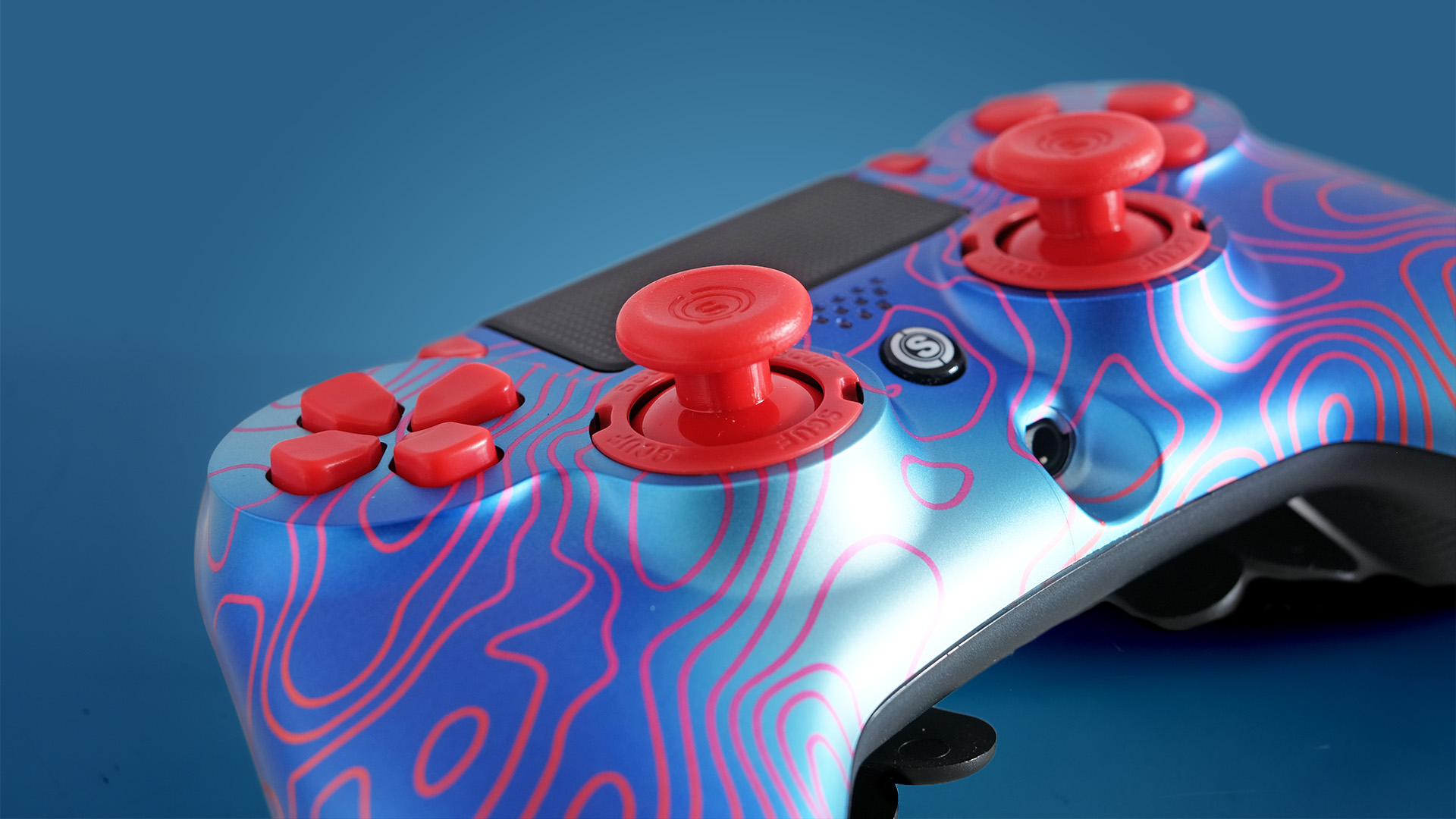
Some high-end pads ask you to accept a tough reality, that you pay more for first-party and yet get fewer features. That is not the case here.
The Scuf Impact mirrors virtually everything in a DualShock 4, and then adds some extras. There are dual vibration motors, the Touch Bar and the light bar on the back. The Scuf Impact has a built-in speaker, headset jack and motion controls.
This is a wireless pad too, making it a controller that matches the first-party one at each point.
Impact shape and paddles
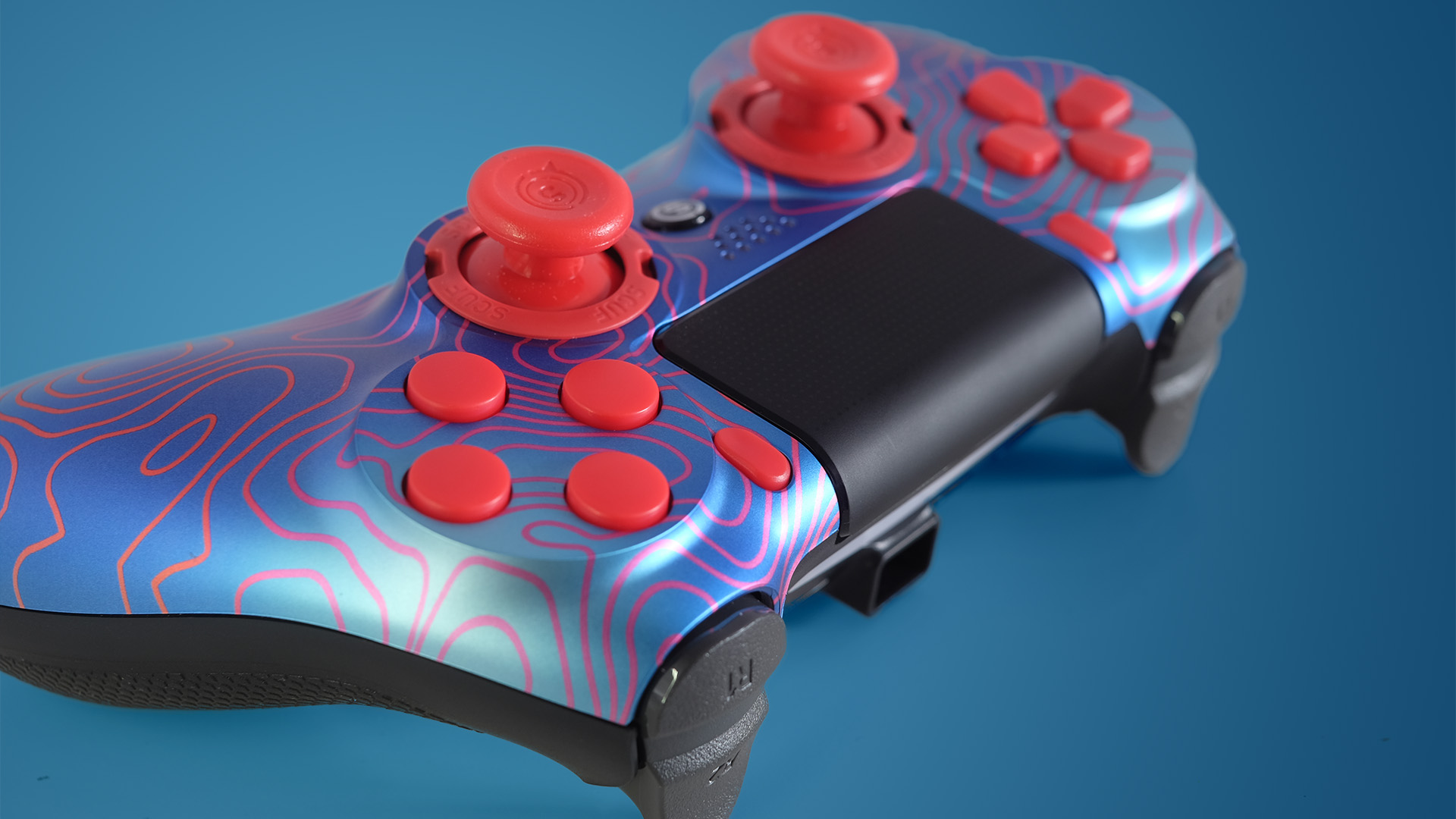
The shape and paddles are two primary reasons to buy a Scuf Impact instead of saving $100 and buying a DualShock 4.
Scuf makes pads that emulate the style of the PS4 DualShock and the Xbox pad. These are the Infinity and Prestige lines.
Impact broadens the width of the pad, and alters the angle of the grips a little. You could say it suits bigger hands, or that it’s made for a surer grip. Those are valid observations, but our takeaway is the shape was chosen with trigger use in mind.
The Scuf Impact has four triggers on the back, doubling up the ways to ‘press’ the pad’s face buttons. These feel great, given enough room to allow the plastic paddles to curve outwards, rather than being crammed into a limited space between the grips’ own contours.
The paddles are removable. They are simple pieces of plastic you can twist out after pushing them up from their locked position. But the roominess of the Impact pad design means we don’t feel we need to, even when using the face buttons instead.
A paddle press also requires a reasonable amount of pressure from, most likely, the side of your middle finger, so you don’t end up activating them accidentally. The paddles press into tiny micro buttons on the back of the Scuf Impact.
After switching from a DualShock 4 our first two impressions were that a) the Scuf Impact’s paddles feel great and that b) your hands seem further apart. If you want a petite controller, you don’t want an Impact.
Grip and customization
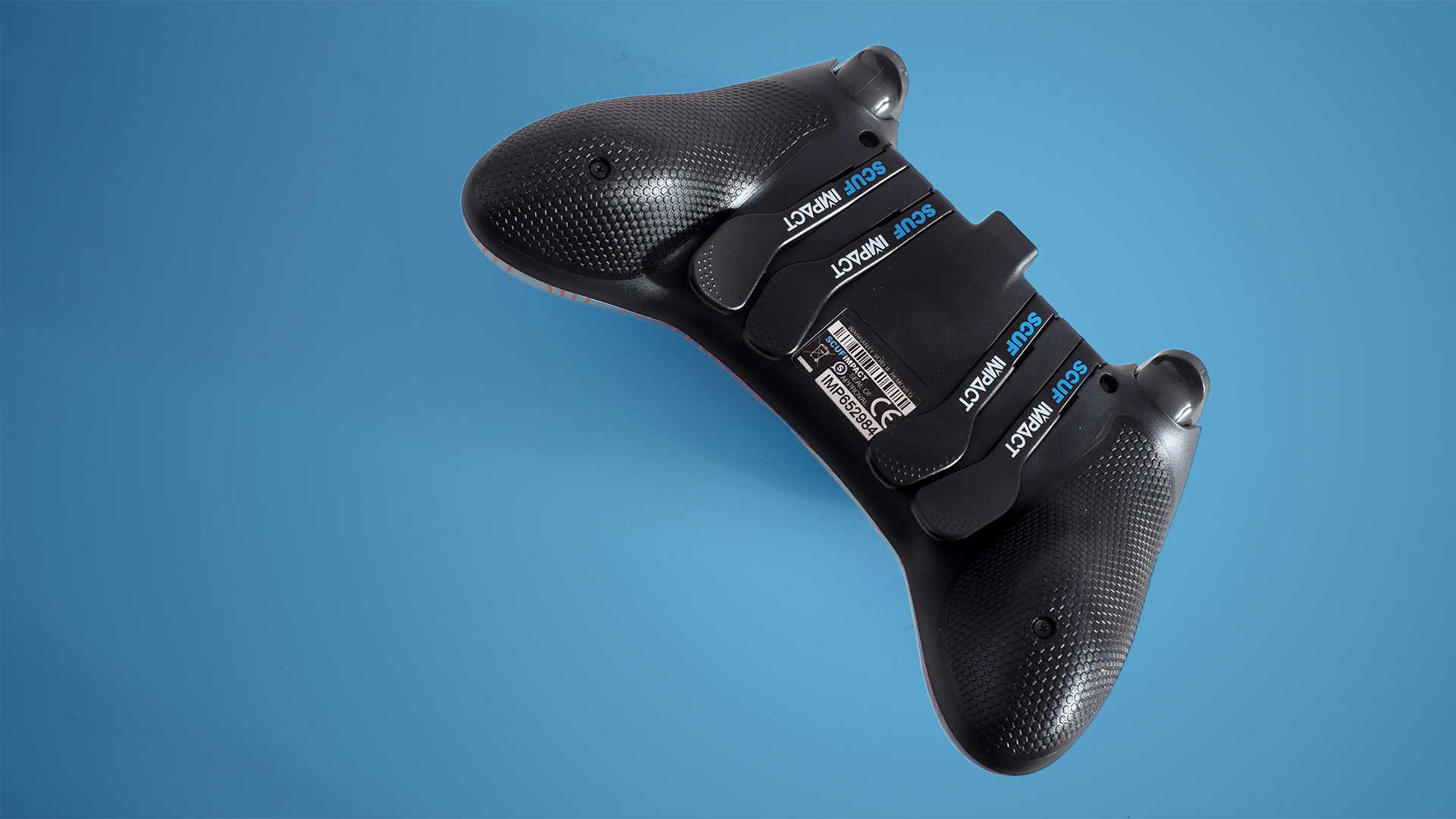
Scuf isn’t out to offer a small, dainty controller with the Impact. And you can make it a much grippier pad than the DualShock 4 or DualSense by choosing the “High Performance” grip when you buy.
The Impact comes with a standard textured hard plastic surface on the back, but the High Performance option replaces this with a layer of embossed rubber.
It’s probably a good add-on if you play a lot of competitive games.
There are a load of other tweaks too. Scuf lets you choose from 62 faceplates. The one seen here is called Energon.
You can get concave or convex analog stick caps. There are short and long sticks, and they come in seven colors. Even the mounting rings around the sticks can be a completely different shade if you like. And the buttons come in 18 colors.
We don’t think this Frankenstein’s monster stuff is as important as the quality of the Impact controller itself, of course, but what you see here is just one of the series’s many, many faces.
Customizations that matter: EMR
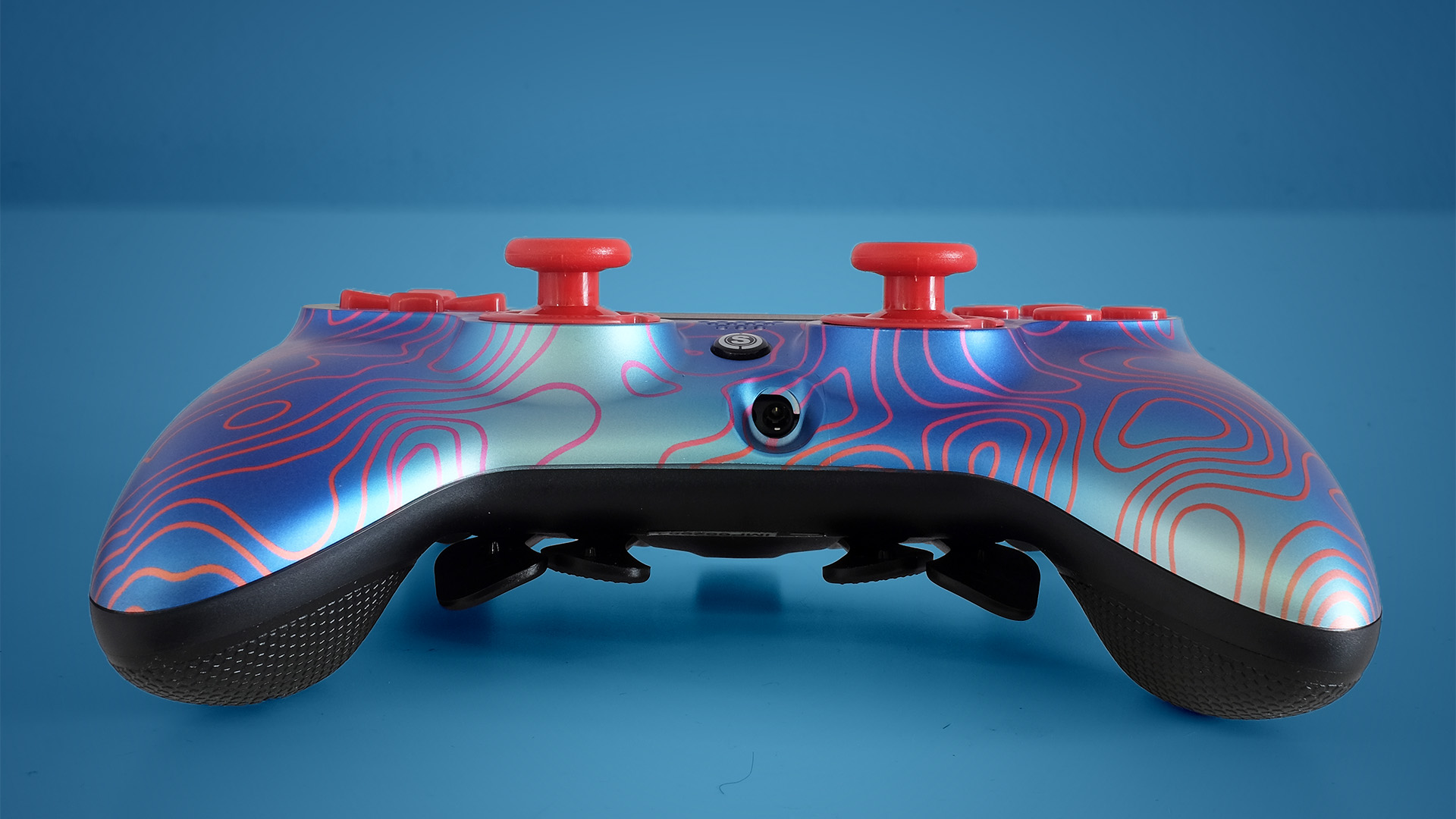
There are two options you need to think a bit more about. The first is EMR. This lets you re-map the paddles to emulate different face buttons.
You put the little EMR magnets in position on the back, hold down one of the triggers and press a face button. That includes D-Pad directions and the L3/R3 inputs you get by pressing down an analog stick.
Our Scuf Impact doesn’t have EMR, so our triggers are locked to mimic the four standard buttons.
Triggers and sticks
Trigger style is one of the other Impact elements to consider. Scuf offers three types. There’s a standard trigger setup, an adjustable hair trigger -which is probably the best all-around option - and what we have here, Scuf’s Digital Tap Trigger.
These make your triggers and bumpers feel more like mouse clickers than traditional trigger buttons. The ‘clonk’ of a trigger is replaced by a much lighter ‘click’, and this is great for fast reaction FPS games as you can press the thing much more rapidly.
After an hour or so we didn’t miss the darker feel of a normal trigger either. These things feel good, but are ultimately far more limited as there’s no graduated input. If you want to play a racing or flight sim game, where the trigger acts as a throttle, it’ll be at 0 or 100 — all of that fine-grain control is removed.
Buy a digital trigger Impact controller and it becomes a pad best suited for FPS titles only.
There are ‘short’ and ‘long’ analog sticks too. This is something you choose when you buy, as you don’t get two sets in the box.
Buy a replacement set separately and it’s fairly easy to swap them around. A little bundled tool lets you remove the securing ring around the outside, after which you can pull the caps off.
However, unlike the Trustmatser eSwap Pro this is not a truly modular system. You replace the caps, not the inner workings.
We’re not sure how well the Scuf sticks will fare after a year of regular use, as their upper rubbery covering is quite gummy. This feels pretty good, offering plenty of resistance and a softer-than-most surface. But you can feel some slight movement in this gummy rubber during the heat of the action, suggesting it may wear more quickly than a DualShock 4 stick. This seems to be a reasonably common complaint.
D-Pad and buttons
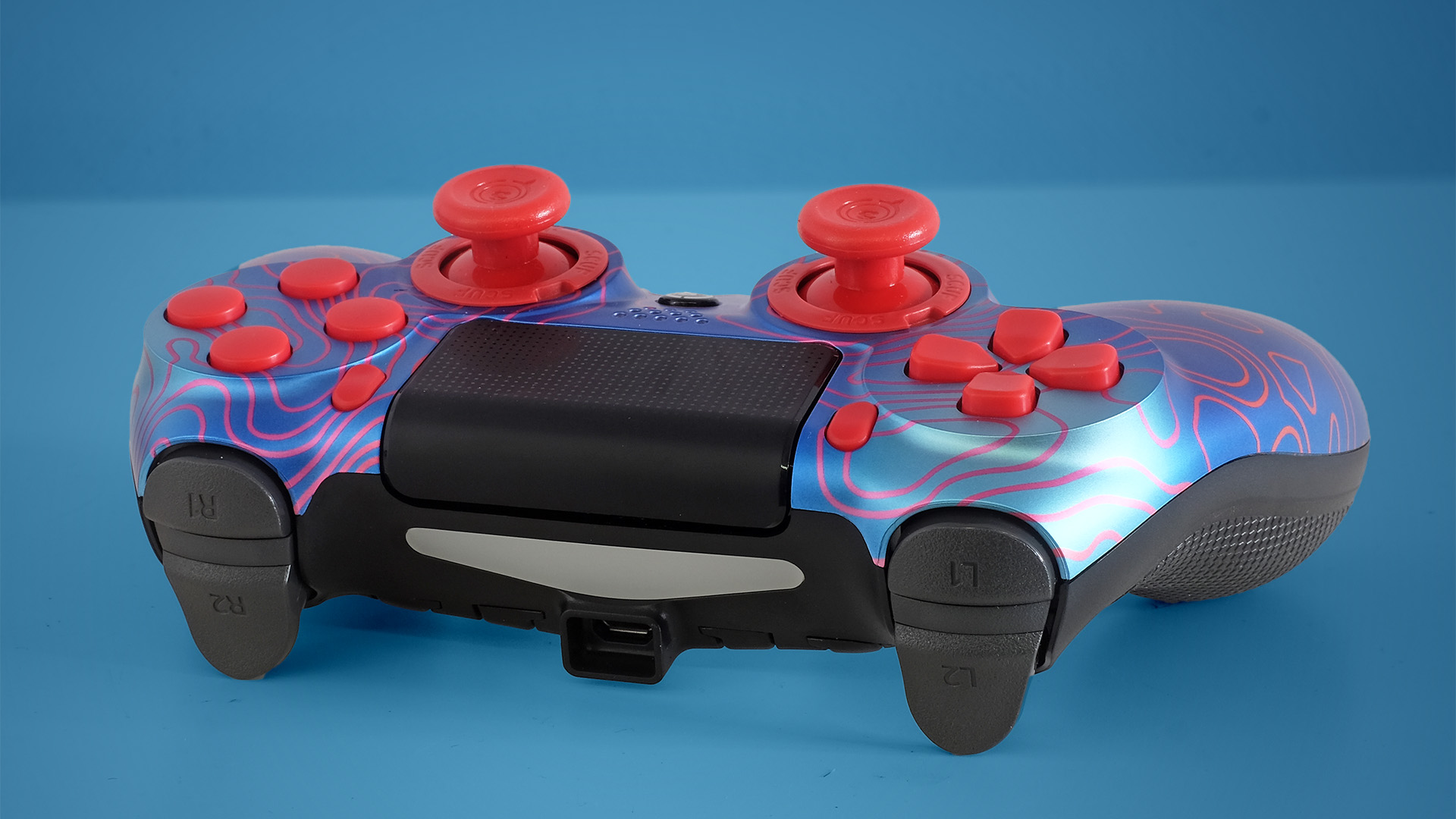
The Scuf Impact makes a great all-rounder and FPS game controller. But what about fighting games?
Its D-Pad uses the same style as a DualShock 4. The four buttons are separate islands in the pad surround. Their corners are rounded, making 180-degree gestures across them more comfortable than, say, they would be on an Xbox Series X pad.
And perhaps our trusty DualShock 4 buttons have become a little slick over the years, but those same motions also feel smoother here than on a first-party pad.
We’re not convinced this is a world-class D-pad, though. The actuation response of the ‘down’ button is greater than that of the ‘up’. Still, it’s one of the better non-specialized pads for one-on-one fighters we’ve used. And Scuf offers a Control Disc accessory that increases the area of the D-pad and turns its surface into a rubbery plate.
That is the only criticism we have about the SCUF Impact’s button feel, though. The face buttons, the analog stick depress clickers and the triggers all feel great.
Battery life and connections
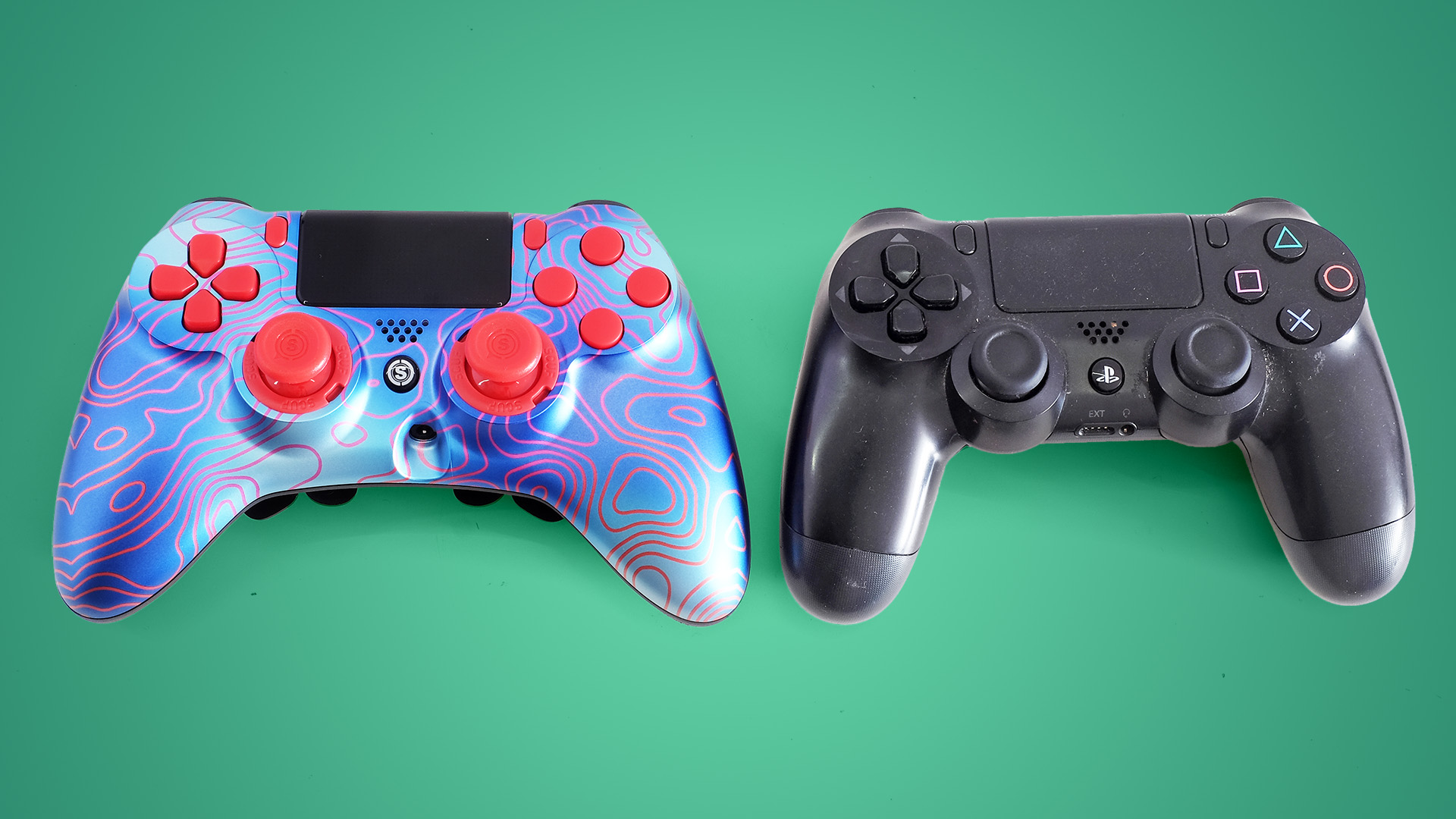
The SCUF Impact is a wireless controller. Much like a DualShock 4, you can use it with phones and PCs as well as the PS4. And it has a microUSB port for wired use, one with a plastic perimeter wall around it to avoid socket damage.
Its battery lasts around 7-8 hours off a charge in our experience, although that figure will drop if you play titles with a lot of rumble effects.
Using the SCUF Impact in 2021 it feels like time for Scuf to make the jump to USB-C. But, hey, it’s a PS4 controller, not a PS5 one.
We didn’t have a PS5 to test the pad with. However, it should also work with the newer console, albeit without the added features of a DualSense pad, therefore unsuitable for PS5-specific games.
We also tried plugging it into an Xbox Series X and, unsurprisingly, it didn’t work. It’ll charge, but that’s it.
Should I buy the Scuf Impact?
Buy it if...
You want a serious pad for FPS games
FPS players are probably the top SCUF Impact demographic. This pad has great paddle controls, the option of ultra-fast digital triggers, and we find the Impact’s shape comfortable longer sessions.
You want to make a pad your own
Scuf offers stacks of customization options when you buy an Impact. These affect not just how it looks, but how the triggers and sticks feel. So we've only actually reviewed one of the many iterations of the Impact line.
Don't buy if...
You are a price-conscious
We’re not sure a Scuf Impact is the best buy if money is tight. The starting cost is high enough but add color, grips or advanced triggers and the price starts to rise even higher. Spending this much on a pad for a last-generation console is probably a bit of an ask for many.
You want a pad for PS5
We don’t recommend buying a Scuf Impact for a PS5, rather than a PS4. While it will connect and work for PS4 games, you need a DualSense for PS5 games as it has a bunch of features not present in an Impact pad.
Comments
Post a Comment